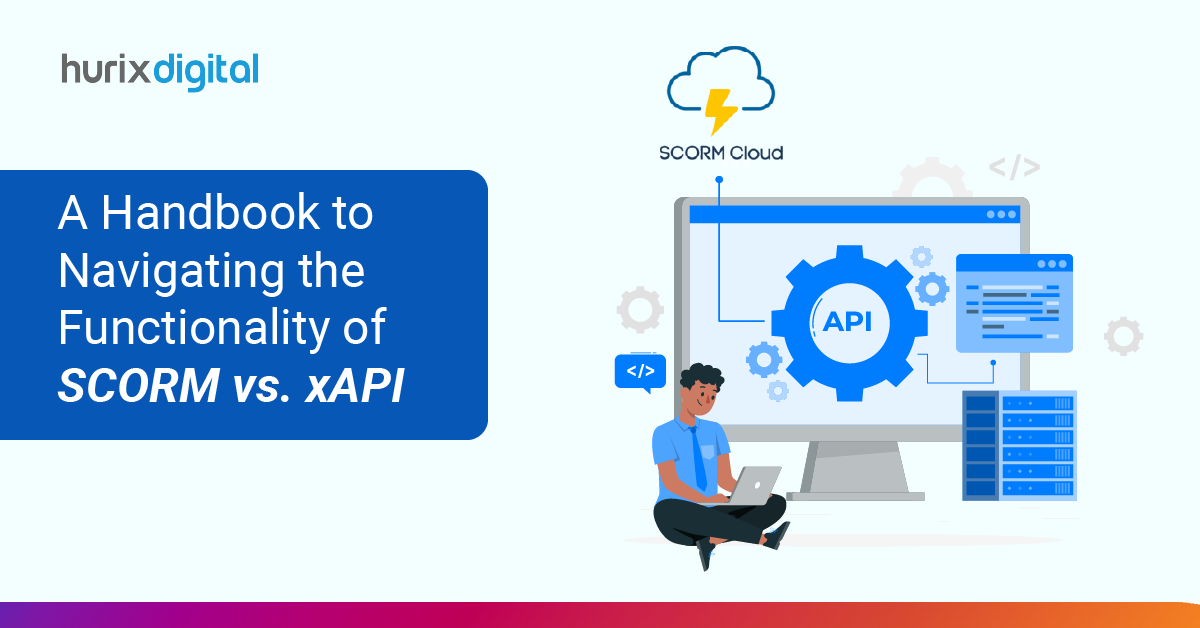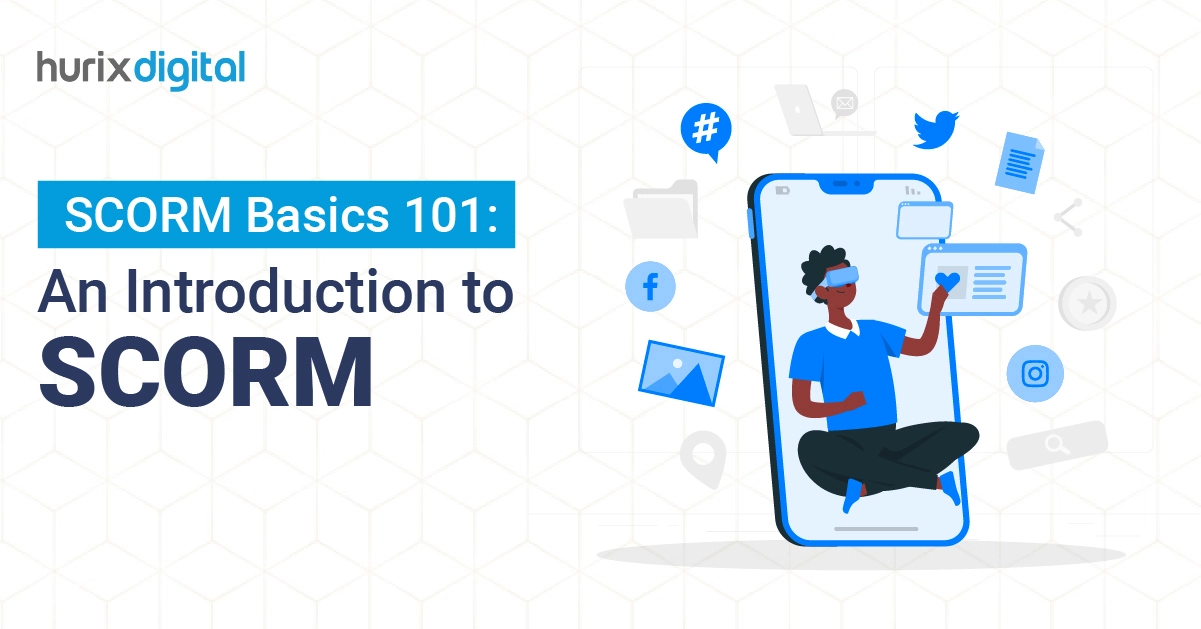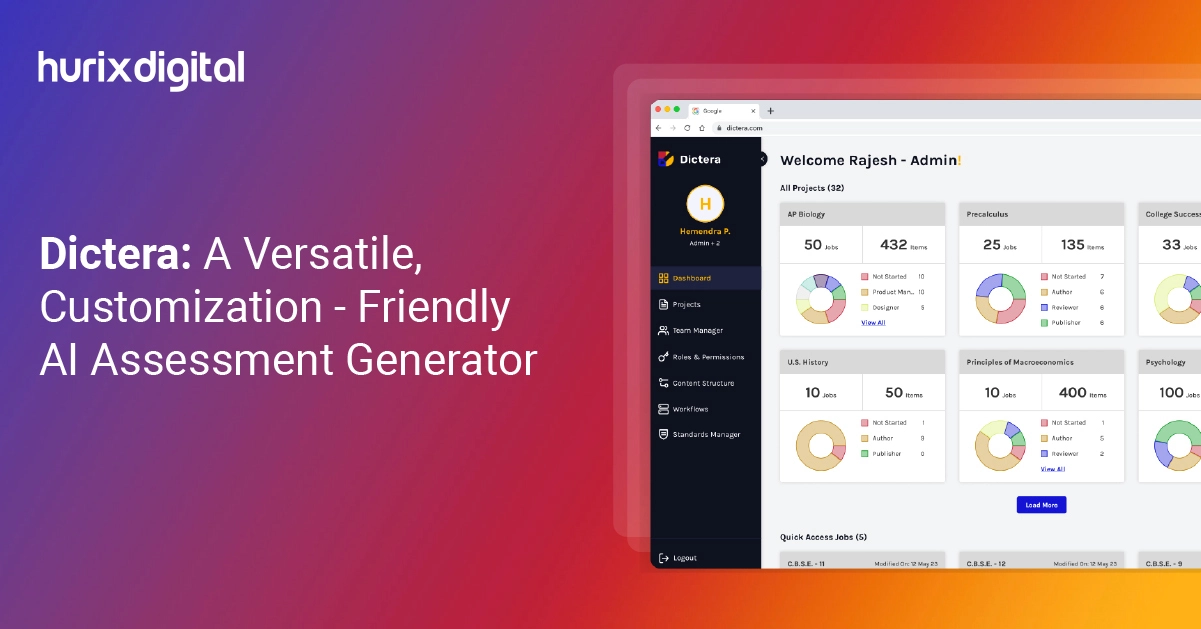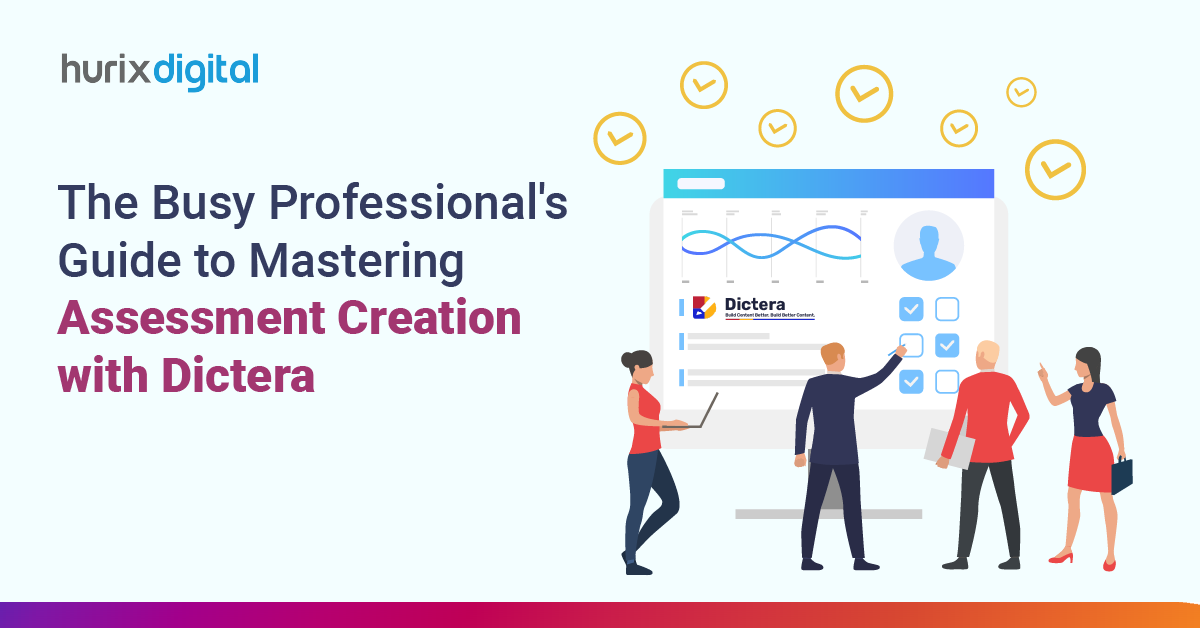
A Handbook to Navigating the Functionality of SCORM vs. xAPI
Summarize with:
Selecting the appropriate learner data tracking and management standard is necessary for eLearning.It guarantees a smooth and productive learning process.
xAPI (Experience API, also known as Tin Can API) and SCORM (Sharable Content Object Reference Model) are two standards frequently used in the eLearning sector. Since the initial release of xAPI in 2012, 27,000 xAPI course packages have been submitted to SCORM Cloud.
Although they are both essential benchmarks for monitoring eLearning development, their distinct characteristics and levels of versatility are very different.
This blog navigates you through a comparative analysis between SCORM and xAPI to assist you in choosing which standard is ideal for your eLearning course.
Table of Contents:
- Overview of SCORM
- Overview of xAPI
- A Comparative Analysis: SCORM vs. xAPI
- Choosing the Right Standard: SCORM vs. xAPI
- Takeaway
Overview of SCORM
ADL (Advanced Distributed Learning) created SCORM, a set of technological guidelines for producing and delivering e-learning materials. It outlines the interactions between Learning Management Systems (LMS) and online learning materials.
SCORM regulates run-time and packaging content. How a content unit is packaged dictates how it should be effectively presented. For learning content to be set up, comprehended, and monitored correctly, its file must adhere to strict guidelines specified by SCORM.
The run-time interaction or data transfer protocol specifies how the instructional object communicates with the LMS. This protocol conveys commands between the learned information and the module, such as “share with the LMS that the pupil got 95% on this quiz” and “make a request for the pupil’s name.”
Some of the salient features of SCORM are as follows:
- Interoperability: SCORM format promotes interoperability across many platforms. It guarantees that eLearning content produced with a single authoring tool can function flawlessly with any SCORM-compliant LMS.
- Tracking and Reporting: SCORM allows for the tracking and reporting of learner progress, quiz results, completion status, and other pertinent data. It offers valuable insights into student performance and engagement.
- Content Packaging: SCORM authoring tools organize content into courses or modules that are simple to share, thereby making it easier to distribute to students.
Overview of xAPI
The Experience xAPI, also known as xAPI, is an IEEE-recognized standard (IEEE 9274.1.1-2023) for learning technologies that enable the collection of information on an individual’s wide variety of instances, both online and offline.
This API gathers information in a standardized format on an individual’s or group’s operations across various technologies.
By gathering and distributing this series of actions, entirely distinct systems can converse safely by utilizing the basic vocabulary provided by xAPI.
Some of the key features of xAPI are as follows:
- Track Any Experience: xAPI offers an in-depth overview of student activities by tracking various learning events, including reading books, attending conferences, and attending online courses.
- Real-time Data: xAPI’s ability to track real-time learning engagements allows learners to receive fast feedback and individualized learning experiences.
- Mobile Compatibility: To accommodate the on-the-go lifestyle of today’s learners, xAPI is compatible with mobile devices and allows tracking of learning activities across numerous devices.
Also Read: Top 10 Advantages of Using Generative AI for Assessments in Schools
A Comparative Analysis: SCORM vs. xAPI
Understanding the distinctions between SCORM and xAPI is key to selecting the right tools and material for your eLearning endeavors. Hence, understanding other aspects, like pros and cons, is crucial when choosing the standard that best suits your organization’s requirements.
1. Pros and Cons of SCORM
SCORM is regarded as an established standard in e-learning for a valid purpose. These are a few of the popular pros and cons of SCORM.
Pros
- Established standards with widespread adoption.
- Interoperability with various authoring tools and LMS platforms.
- Well-suited for traditional eLearning courses with linear content.
Cons
- Tracking non-traditional learning experiences is limited.
- Relies on a structured format that may restrict content flexibility.
- It does not support real-time data tracking as effectively as xAPI.
2. Pros and Cons of xAPI
Although xAPI is the latest eLearning standard available, is using it in your learning procedures worthwhile? To assist you in making that decision, we have listed the most noteworthy pros and cons of xAPI.
Pros
- Greater flexibility in capturing diverse learning experiences.
- Real-time data tracking for actionable insights and adaptive learning experiences.
- Mobile-friendly and supports tracking across multiple devices and applications.
Cons
- Requires more planning and expertise to implement effectively.
- Lack of widespread adoption compared to SCORM.
- It may involve higher implementation costs and technical complexity.
Also Read: SCORM and the Future of Learning: Latest Trends and Developments in 2024
Choosing the Right Standard: SCORM vs. xAPI
Designing a virtual educational program with the proper content standards will undoubtedly extend the content’s validity. Selecting between xAPI and SCORM can be daunting, but it can be straightforward if you know the differences in functionalities and use cases between the two standards.
1. Use Cases of SCORM
SCROM is best for conventional e-learning courses that must be compatible with popular authoring tools and LMS platforms. It has standardized tracking and provides organized content delivery.
The best use cases are:
- Corporate training programs
- Compliance courses
- Certification modules with linear content structures
2. Use Cases of xAPI
xAPI is most suitable for a wider range of tracking, real-time data analysis, and customized learning experiences required in interactive and immersive learning scenarios.
The best use cases are:
- Simulation-based training
- Gamified learning experiences
- Informal learning activities
- Mobile learning applications
Takeaway
The choice between xAPI and SCORM ultimately depends on the specifics of your eLearning course, the learning experiences you want to record, and the degree of tracking you need.
SCORM software is a dependable option for classic eLearning content because of its extensive compatibility and consistent tracking requirements. However, xAPI provides a more immersive learning experience because it can record various learning interactions outside the boundaries of a standard LMS.
When choosing the right standard for your eLearning course, consider elements like the course objectives, learner engagement tactics, technological capabilities, and long-term scalability.
If you are looking for automated assessment services to enhance your eLearning course, consider Dictera, A Hurix Digital product. From custom workflow management to tracing metrics, we harness the power of machine learning to automate assessments.
To learn more about our assessment services, book a call with us right away!
Summarize with:

Vice President & SBU Head –
Delivery at Hurix Technology, based in Mumbai. With extensive experience leading delivery and technology teams, he excels at scaling operations, optimizing workflows, and ensuring top-tier service quality. Ravi drives cross-functional collaboration to deliver robust digital learning solutions and client satisfaction
 A Space for Thoughtful
A Space for Thoughtful 



